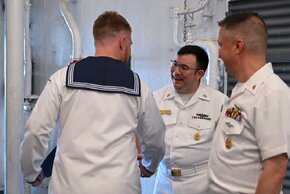This refueling issue is overblown IMHO. The French SSNs have double crews which means lots of sea time - so the RAN might run longer patrols, but with single crews and fewer sea days things would offset each other and reactor use would end up being about the same.
Here's some rough math to illustrate what I mean:
1) The Rubis class SSNs are retiring having logged ~1,200,000 nautical miles and 120,000 dived hours over 36 years. This translates to an average speed of advance of 10 knots. They used 5 cores over this time (i.e. 4 refuelings) so sailed ~240,000nm between refuelings.
2) For the RAN a 10 knot speed of advance is about right for a 60-70 day patrol from Perth to the South China Sea or the Taiwan Strait, even taking a roundabout route with a stopover in Guam or Okinawa... 3-4 weeks transit at ~15 knots and 6 weeks tooling around on patrol at ~8 knots. Typical distance travelled would be 15,000 - 20,000 nautical miles per patrol.
3) On a Rubis you could do 2 long patrols like this every year for 7 full years before having to refuel the reactor in year 8. The French usage with double crews is actually somewhat more intensive than this, with 170-180 days/year @ 10 knots which translates to 40,000nm+ each year.
4) With the Suffrens, reactor life is improved - somewhere around 25-50% better than a Rubis (very roughly) - allowing for 8-10 operational years between refuelings depending on how intensively the reactor is used.
4) For the RAN, with a single crew I would assume 100-120 days of sub duty per year is the max achievable, as any more would run into retention issues. Even bumping up the average speed of advance to 12.5 knots (16 knots transit and 10 knots patrol, with a 40-60 mix), that would add up to 30,000 - 35,000 nm/yr, which those Suffren cores with 300,000nm+ lives could easily handle for ~9 years before refueling.
At that point when you hit year 10 you're docking your sub anyway for deep maintenance, so refueling becomes just a list of task items to perform - many of which will run concurrently without extending the docking by much. (Worse case, the refueling duration on a Rubis is 5 months from initiating reactor shut-down to being able to sail off again with a fresh core)


